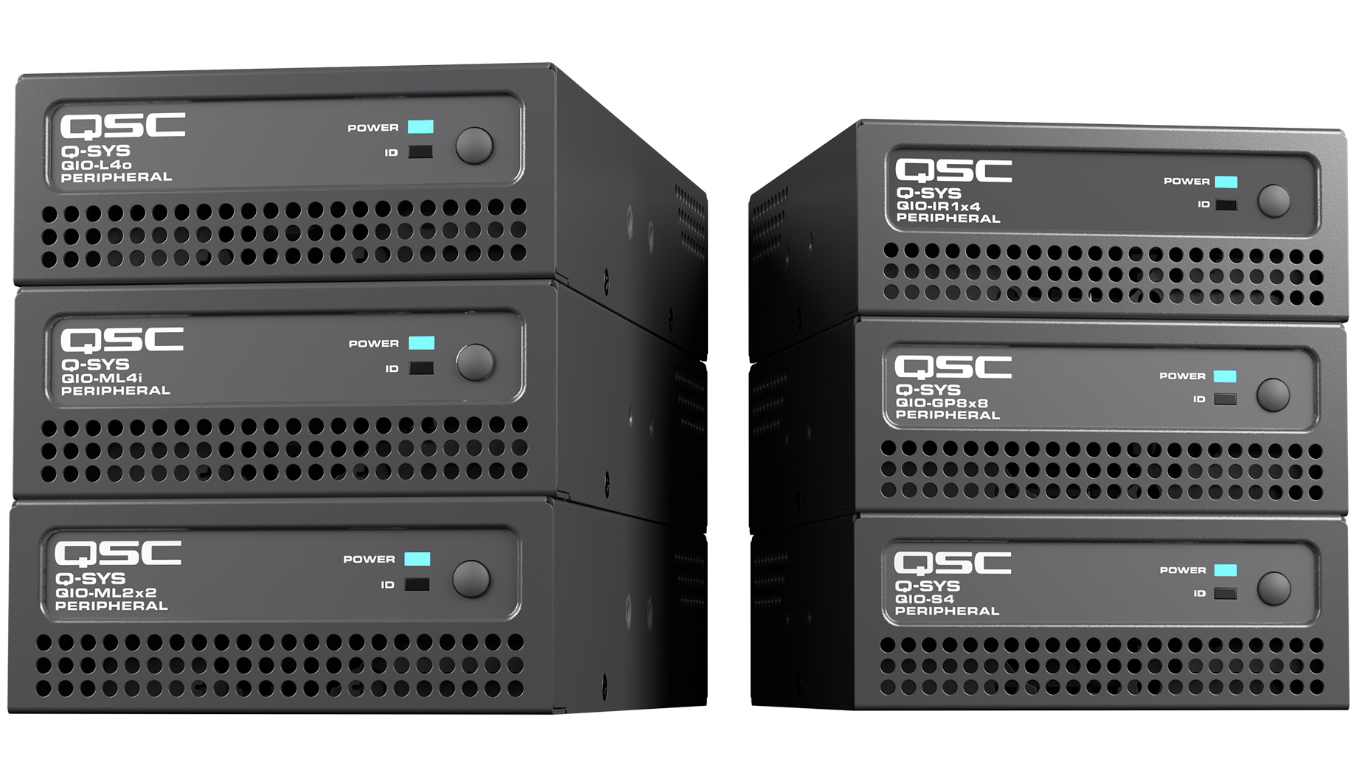During a live virtual event on February 16th, QSC announced the QIO Series network I/O expanders for the Q-SYS cloud-manageable audio, video and control Platform. These new I/O expanders provide simple and scalable I/O customization for users who need to easily add non-networked audio and control connectivity to a Q-SYS system without complicated programming.
The QIO Series includes three Audio I/O models and three Control I/O models, each supporting a specific connectivity type. Designed to support distributed, centralized or hybrid networks and processing architectures, these I/O expanders enable designers to decouple the location of device I/O from the audio, video and control processing. This expands the I/O customization possibilities of the newer Q-SYS Core processors that have fewer onboard I/O options, including the Core Nano, Core 8 Flex and NV-32-H (Core Capable). All models feature a compact form factor that can be rack- or surface-mounted.
[ Exclusive Interview: QSC Creates Two Independent Divisions ]
Audio I/O models feature professional mic/line level inputs with +48 VDC phantom power and/or line outputs to ensure high performance and compatibility, along with microphone detection on inputs to enable monitoring, usage statistics and failure notifications.
· QIO-ML4i: Four mic/line inputs
· QIO-L4o: Four line outputs
· QIO-ML2x2: Two mic/line inputs and two line outputs
Control I/O models add IR, serial or GPIO connectivity to integrate control over a wide variety of devices into any Q-SYS system.
· QIO-IR1x4: For the first time on a native Q-SYS Product, integrators can add IR control connectivity. It includes one IR receiver input and four IR emitter outputs, enabling control for any number of professional/consumer devices including video displays, media players and more.
· QIO-S4: Featuring four bi-directional RS232 serial ports (including on port with RS422 and RS485 compatibility), it enables control over lighting systems, video displays, conference systems, broadcast devices and more.
· QIO-GP8x8: Provides eight logic inputs and eight logic outputs for systems needing to interface with occupancy sensors, push buttons, LED indicators, buzzers and more.
With the QIO Series, integrators can daisy-chain up to four Q-SYS QIO devices on a single network run (with local daisy-chained DC power) to consume fewer network ports, avoid rack clutter and easily expand I/O in the future, without pulling additional network cables. Alternatively, the QIO Series are also PoE capable providing simple, single cable connectivity when devices are not daisy-chained.
“The new Q-SYS QIO Series are an ideal extension of the Q-SYS Core processor capabilities and gives integrators the ability to add non-networked devices into any Q-SYS system quickly and easily using the familiar Q-SYS Designer Software,” said Trent Wagner, audio product manager, QSC. “Furthermore, integrators have the ability to tailor product placement to the specific needs of almost any installation expanding design options to serve the widest range of applications while simultaneously reducing system complexity and installation costs.”
[ QSC Roadmap 2022 ]
[ QSC Names Jatan Shah President and Chief Operating Officer ]
Check out the opening remarks to the QSC’s virtual event, and all new product releases:
[ QSC's President and COO Opens Live Virtual Event Where 15 New Products Were Unveiled ]
[ First Network Microphone and Loudspeakers Native to Q-SYS ]
[ QSC Premium Outdoor Landscape Loudspeaker System to its AcousticDesign Series ]
